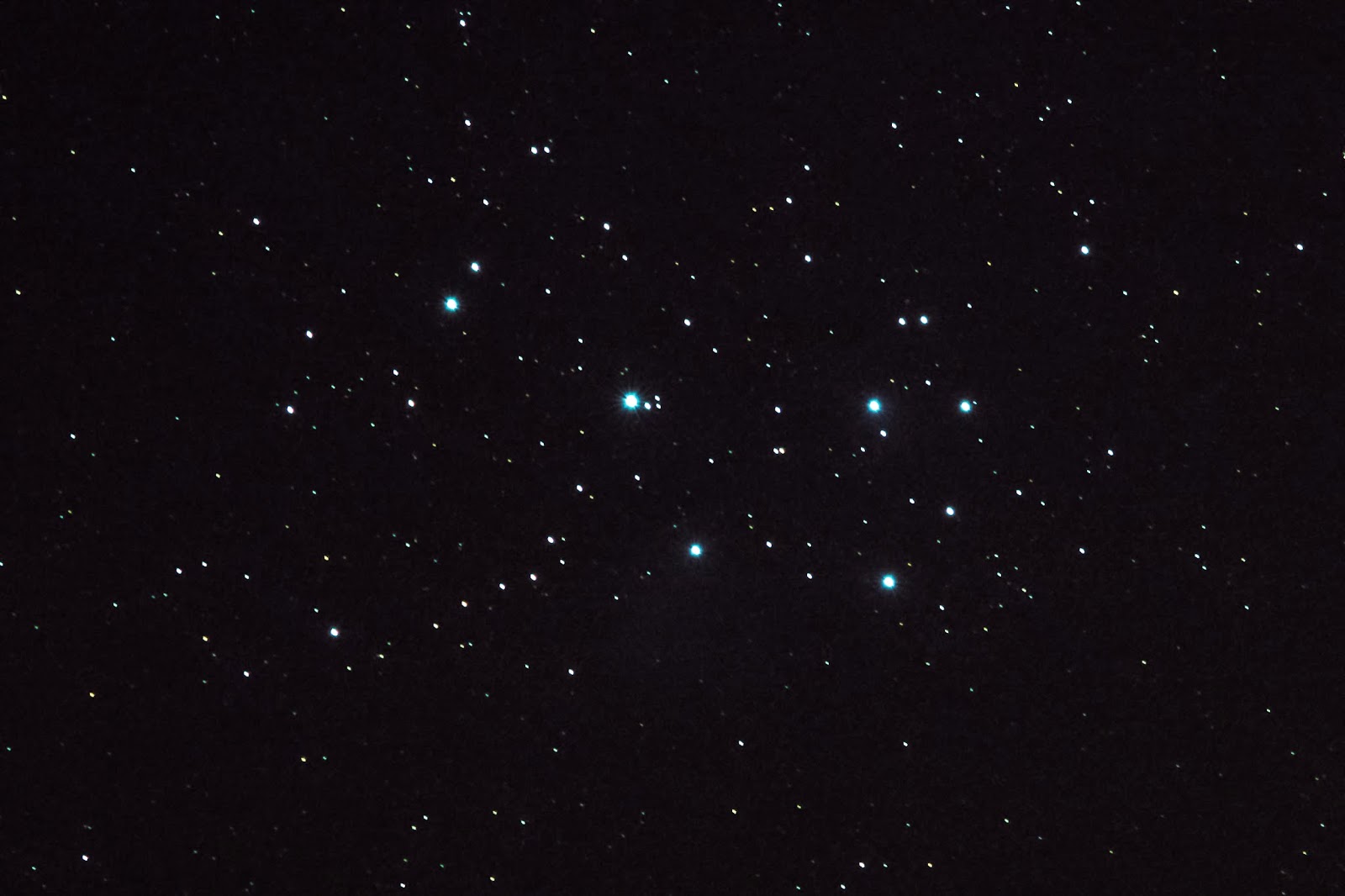One technique commonly used in astrophotography is called stacking, in which you take dozens or even hundreds of pictures and stack them in a program that analyzes them and creates a sum of their parts. this Helps to capture datails in faint deep sky objects that would otherwise remain invisible. Another benifit of stacking is noise reduction. By analyzing certain frames the program recognizes and subtracts noisy pixels from the stacked picture, creating a much less noisy final image.
This is an image of the constellation Pleiades (M45), commonly known as the seven sisters. I created it using 140 images stacked in the program Deep Sky Stacker. When looking through my telescope, I can barely make out any of the nebula surrounding the stars. In the stacked image it is clear to see.
For comparison, this is how a single frame from this image stack looks.
And this is how the image looks after stacking all the frames.
It takes a bit of time and tweaking to uncover the details in the image, but the result is very rewarding!
Here are the technical details:
Camera: Canon 60D
Lens: Sigma 150-500 5-6.3
Pictures taken at 247mm, f6.3, 1.6 sec, ISO 3200
100 Light Frames
20 Dark Frames
20 Biased Frames
Total exposure time 160 sec.






































